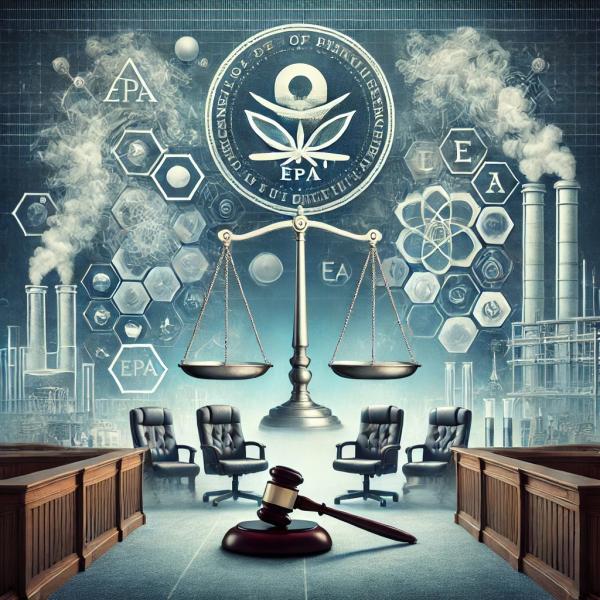
In a matter of days, there will be a change of administration at the EPA. An essential but overlooked concern is whether the EPA will return to its initial definition of “unreasonable risk” under the Chemical Safety Act, known as the amended TSCA. This is just one example of the policy back and forth that occurs with changing Administrations due to Congress not defining the critical elements of legislation and deferring these decisions to the EPA – the result is a ping-pong of science-based policy decisions that have significant ramifications for businesses, the public, and the entire country.
The Toxic Substances Control Act (TSCA) was passed in 1976 to regulate both new chemicals coming to the market and existing chemicals harmful to human health and the environment. In 2016, the Frank R. Lautenberg Chemical Safety Act was passed overwhelmingly to address the shortcomings of the original TSCA to “strengthen EPA’s regulatory authority and establish clear processes and timelines for identifying, assessing, and managing chemicals in commerce that present unreasonable risks.”
The Chemical Safety Act (CSA) laid out a three-step process for regulating existing chemicals:
- Prioritization of chemicals of concern as low or high-priority
- EPA risk determination of whether the chemical presents an unreasonable risk of injury to health or the environment under the conditions of use. [1]
- Risk management regulations to eliminate those risks found to be unreasonable.
Unfortunately, Congress failed to define “unreasonable risk,” setting off nine years of policy debate. The risk management regulations are the most crucial step in the three-step process because this is where EPA sets forth the means to limit exposure to chemicals. For example, as discussed in my previous article on methylene chloride, EPA’s recent risk management rules for methylene chloride banned many of its uses, including the manufacturing, processing, and distribution of methylene chloride for all consumer uses and most industrial and commercial uses, including paint and coating removers. Another example is decabromodiphenylether (decaBDE), where, in managing risk, the EPA banned the manufacture, processing, and most uses but allowed the recycling of decaBDE-containing plastic products.
Trump Administration (2016-2020)
In 2017, the EPA published a Risk Evaluation Rule establishing a process for conducting risk evaluations for chemicals under the CSA. The EPA did not define “unreasonable risk” in this rule. Instead, it said it would consider several factors, including the effects of the chemical on human health and the environment, the population exposed, and the severity of the hazard, in determining unreasonable risk. Additionally, the EPA stated that it had discretion in deciding which conditions of use it would consider in the risk evaluations, allowing it to issue individual risk determinations based on one condition or any combination of uses.
Subsequently, several advocacy groups filed a lawsuit, arguing that in the risk evaluations, the EPA should:
- Evaluate conditions of use collectively, not individually
- Not be able to exclude some conditions of use from the risk evaluations
- Not be able to exclude legacy (historical) activities.
In 2019, the Court dismissed the petitioner’s first two arguments but agreed with their 3rd argument that the EPA’s exclusion of legacy uses contradicted the CSA. [2]
Risk evaluations were completed in 2020 for seven chemicals: 1,4-Dioxane, 1-Bromopropane, Carbon tetrachloride, Methylene chloride, N-Methylpyrrolidone (NMP), Tetrachloroethylene (TCE), and Perchloroethylene (PCE), designated in the CSA to be completed first. All seven chemicals were determined to not present an “unreasonable risk,” using selected conditions of use and assuming all workers used personal protective equipment (PPE). Risk management rules for all seven chemicals were not completed by the end of 2020 and the change in Administration.
In June 2021, the newly elected Biden Administration withdrew the risk evaluations conducted under the Trump administration and finalized a revised version of the 2017 Risk Evaluation Rule in 2024. The revised Risk Evaluation Rule required the risk evaluations to:
- Culminate in a single risk determination on the chemical substance rather than on individual chemical uses
- Consider all exposure pathways, even if already regulated under other statutes,
- Revisit the assumption that all workers use PPE.
Biden Administration (2021-2024)
In 2022 and 2023, using the newly revised rules, the EPA reversed the Trump EPA's decision, determining that all seven presented “an unreasonable risk.” Concerned with getting risk management rules for these chemicals out before the change of Administration, the EPA finalized risk management regulations for all these chemicals in the last few months of 2024.
2025 and beyond
It won’t shock anyone if the Trump Administration reverses course on the recently completed risk evaluations and risk management rules. This back and forth means that regulation of these chemicals is stuck in limbo. This could have been avoided if Congress had done its job when writing the CSA and not left the definition of important terms to Agency discretion.
A significant new factor is the recent Chevron decision by the Supreme Court limiting the deference to Agencies in areas of statutory ambiguity. In practice, this may be a limiting factor in one Administration’s total reversal of the previous Administration’s rules. Because with deference no longer given to the Agencies, an Administration may make much narrower and more targeted changes, recognizing that the Courts will no longer provide them with automatic deference.
The saga of "unreasonable risk" continues, leaving businesses, public health, and the environment stuck in a holding pattern. With Congress punting its responsibilities and agencies playing policy tug-of-war, the real casualties are the people and industries waiting for clarity. The future of chemical safety looks as unpredictable as ever.
[1] The second element, “conditions of use,” is defined as ‘‘the circumstances, as determined by the Administrator, under which a chemical substance is intended, known, or reasonably foreseen to be manufactured, processed, distributed in commerce, used, or disposed of.’’
[2] Interestingly, the Biden Administration often uses the dismissed part of the lawsuit regarding the collective evaluation of conditions of use to justify their actions, ignoring the fact that the Court dismissed this argument.



